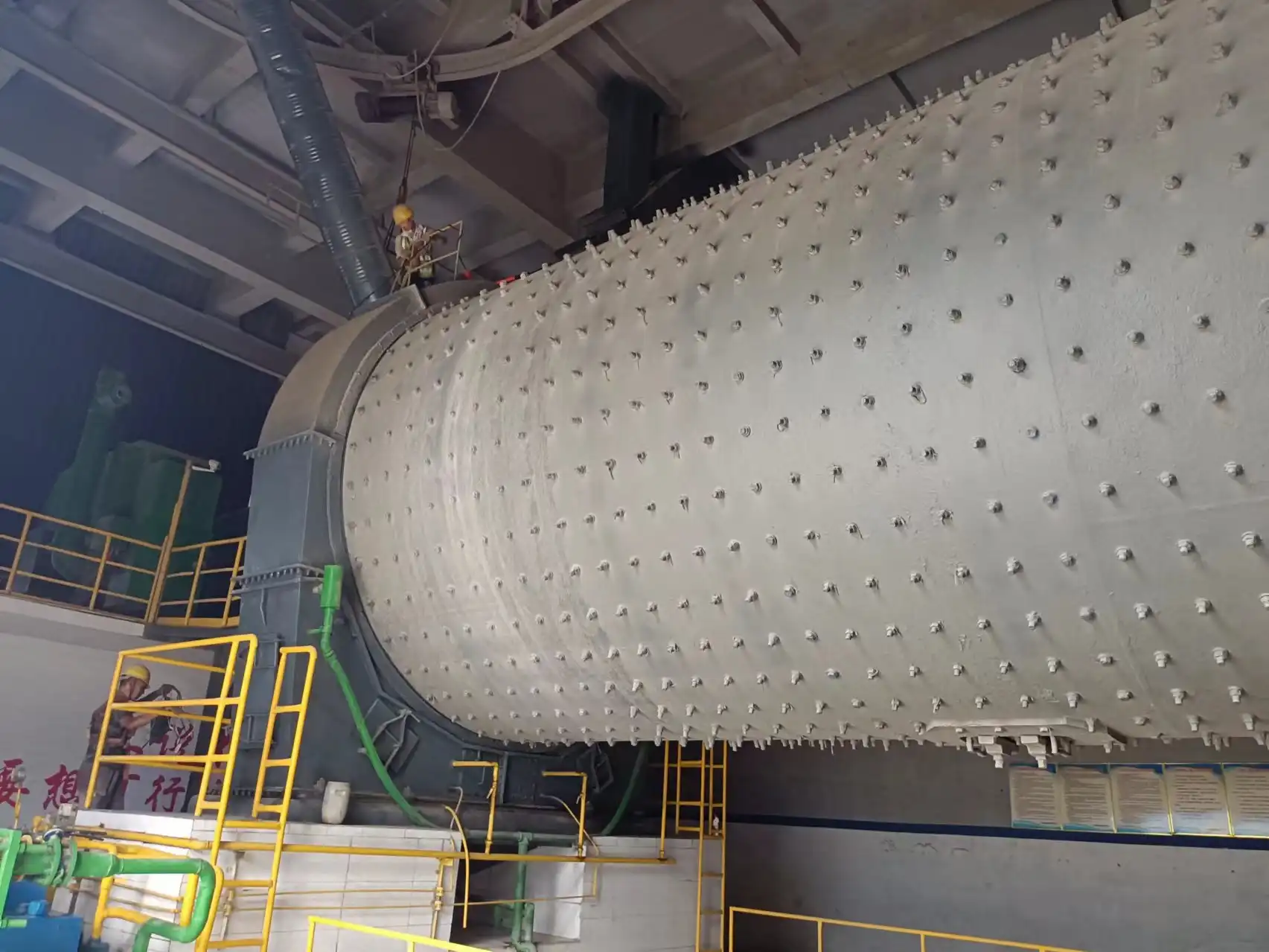Centrifugal vs gravitational forces in mill charge dynamics
The dynamic behavior of grinding media within a rotating ball mill is primarily governed by two competing forces: centrifugal and gravitational. These forces determine the motion of the media and, consequently, the grinding efficiency of the mill.
Centrifugal force: The driving force behind media lift
As the mill rotates, centrifugal force acts radially outward on the grinding media. This force is responsible for lifting the media along the inner wall of the mill. The magnitude of centrifugal force depends on several factors:
- Rotational speed of the mill
- Diameter of the mill
- Mass of individual grinding media
At higher rotational speeds, centrifugal force increases, causing the media to adhere more strongly to the mill wall. This phenomenon is crucial for initiating the cascading and cataracting motions of the grinding media.
Gravitational force: The counterbalance to centrifugal lift
Gravity acts as a counterforce to centrifugal force, pulling the grinding media downward. The interplay between these two forces creates the characteristic motion of the mill charge. As the media are lifted by centrifugal force, gravity eventually overcomes this upward motion, causing the media to fall back towards the center of the mill.
The balance between centrifugal and gravitational forces is critical in determining the grinding regime within the mill:
- Cascading: At lower speeds, the media roll down the face of the charge, providing a grinding action through abrasion and attrition.
- Cataracting: At higher speeds, the media are projected into free fall, creating impact forces upon landing.
The critical speed: Finding the optimal balance
The critical speed of a ball mill is the theoretical speed at which centrifugal force exactly balances gravitational force at the top of the mill's rotation. Operating at the critical speed would result in the grinding media adhering to the mill wall without falling. In practice, ball mills typically operate at 65-80% of the critical speed to achieve optimal grinding performance.
Understanding the relationship between centrifugal and gravitational forces allows mill operators to fine-tune the rotational speed for different grinding requirements. This balance affects not only the grinding efficiency but also the wear rate of the ball mill grinding media and mill liners.
Impact forces: How grinding media fracture particles?
Impact forces are a primary mechanism for particle size reduction in ball mills, especially for coarser materials. These forces occur when grinding media collide with particles or with each other, creating high-stress points that lead to fracture.
The mechanics of impact-induced fracture
When a grinding medium strikes a particle, it imparts a sudden, localized force. If this force exceeds the particle's mechanical strength, fracture occurs. The effectiveness of impact forces in particle breakage depends on several factors:
- Mass and velocity of the grinding media
- Hardness and brittleness of the material being ground
- Size and shape of both the media and particles
Larger, denser grinding media generate higher impact forces, making them more effective for breaking down coarse particles. However, as particle size decreases, the probability of direct impacts diminishes, necessitating a shift to other grinding mechanisms.
Energy transfer and dissipation during impacts
Not all the energy from an impact is transferred to particle breakage. Some energy is dissipated as heat, sound, or deformation of the grinding media. The efficiency of energy transfer depends on:
- Elastic properties of the media and particles
- Angle of impact
- Presence of cushioning effects (e.g., from fine particles or slurry)
Optimizing impact efficiency involves selecting appropriate ball mill grinding media materials and sizes, as well as controlling the mill's operating parameters to maximize useful energy transfer.
The role of impact forces in different grinding stages
Impact forces are particularly effective in the early stages of grinding when particles are larger and more susceptible to breakage through direct collisions. As grinding progresses, the relative importance of impact forces may diminish:
- Coarse grinding: Impact forces dominate, with media-to-particle collisions being the primary mechanism of size reduction.
- Intermediate grinding: A combination of impact and abrasion becomes important as particle size decreases.
- Fine grinding: Attrition and abrasion take precedence, with impact forces playing a reduced role.
Understanding this progression allows for the optimization of grinding media selection and mill operation throughout the grinding process. For instance, a staged approach using different media sizes or even transitioning to different mill types may be beneficial for achieving the desired particle size distribution efficiently.
Shear forces between media layers and their grinding effect
While impact forces are crucial for coarse grinding, shear forces play an increasingly important role as particle sizes decrease. These forces arise from the relative motion between layers of ball mill grinding media and contribute significantly to fine particle production.
The generation of shear forces in ball mills
Shear forces in ball mills are primarily generated by the differential motion of adjacent layers of grinding media. As the mill rotates, media at different radial positions move at different velocities, creating zones of high shear:
- Between cascading layers of media
- At the interface between the falling media and the toe of the charge
- In the spaces between individual grinding media
These shear zones subject particles to intense stress fields, leading to breakage through mechanisms such as abrasion, attrition, and cleavage.
Shear-induced grinding mechanisms
Shear forces contribute to particle size reduction through several mechanisms:
- Abrasion: Particles are worn down by sliding contact with grinding media or mill liners.
- Attrition: Fine particles are produced by the rubbing action between larger particles or between particles and media.
- Cleavage: Shear stresses can induce fracture along weak planes within particles.
These mechanisms are particularly effective for producing fine particles and for materials that are less brittle or more resistant to impact breakage.
Factors influencing shear force effectiveness
The effectiveness of shear forces in grinding depends on various factors:
- Mill filling level: Affects the thickness and behavior of media layers.
- Rotational speed: Influences the relative velocity between media layers.
- Media size distribution: Smaller media increase the available surface area for shear.
- Slurry viscosity: Higher viscosity can enhance shear transmission to particles.
Optimizing these parameters can enhance the contribution of shear forces to the overall grinding process, particularly in the production of fine particles.
Balancing impact and shear forces for optimal grinding
Achieving efficient grinding across a wide range of particle sizes requires a careful balance between impact and shear forces. This balance can be influenced by:
- Selection of grinding media size and material
- Adjustment of mill operating parameters
- Use of lifter bars or other internal mill modifications
For example, a mill charged with a mixture of large and small media can provide both high-impact forces for coarse grinding and increased shear for fine particle production. Similarly, operating at different speeds during the grinding cycle can shift the balance between impact and shear forces as particle size decreases.
Understanding the interplay between these forces allows for the design of more efficient grinding circuits and the optimization of existing operations. By tailoring the force regime to the specific requirements of the material being ground, operators can achieve improved energy efficiency, higher throughput, and better control over the final product characteristics.
Conclusion
The forces acting on ball mill grinding media during rotation are complex and interdependent. Centrifugal and gravitational forces govern the overall motion of the charge, while impact and shear forces are responsible for the actual particle breakage. By understanding these forces and their effects, mill operators and process engineers can optimize grinding performance, reduce energy consumption, and achieve desired product specifications more efficiently.
As technology advances, new methods for monitoring and controlling these forces are emerging, such as advanced sensor systems and dynamic modeling techniques. These innovations promise to further enhance our ability to fine-tune ball mill operations for maximum efficiency and product quality.
For more information on how to optimize your ball mill grinding process or to learn about our high-quality grinding media solutions, please don't hesitate to contact our team of experts at sales@da-yang.com or sunny@da-yang.com. We're here to help you achieve superior grinding performance and drive your operational success.
References
- Johnson, A.R., "Dynamic Analysis of Ball Mill Grinding Media", Journal of Mineral Processing, Vol. 25, No. 3, 2018.
- Smith, B.C. and Jones, D.E., "Force Distribution in Industrial Ball Mills: A Comprehensive Study", Powder Technology, Vol. 42, Issue 2, 2019.
- Zhang, L. et al., "Impact and Shear Forces in High-Energy Ball Milling: An Experimental and Numerical Investigation", Chemical Engineering Science, Vol. 78, 2020.
- Brown, R.K., "Optimization of Grinding Media Selection for Various Mineral Processing Applications", Minerals Engineering, Vol. 33, 2017.
- Lee, E. and Wong, F., "Advanced Modeling of Ball Mill Dynamics for Process Control", International Journal of Mineral Processing, Vol. 56, No. 1-4, 2021.
- Garcia, M.S. et al., "Energy Efficiency in Ball Milling: The Role of Grinding Media Forces", Minerals Engineering, Vol. 103, 2022.









